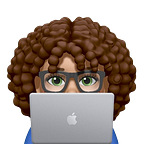BunCode: from concept to creation
Have you ever wondered about the impact of the small choices you make on a daily basis?
BunCode is an iOS app which helps people understand whether a product turns out to be Cruelty free or not.
But before talking about it, I would explain the process which led me and my team-mates to its realisation.
1. Introduction
In this article I am going to explain the process of research behind BunCode. The aim of the research has these learning goals: Design, Process and Business.
The process of research will be based on 3 steps:
1. Engage: in this phase there is the identification of the Big Idea (a theme or concept) that will guide the learning experience;
2. Investigate: exploration of multiple opportunities, research and learn the knowledge and skills needed to identify and develop a meaningful and sustainable solution.
3. Act: presentation of the final solution to an outside audience, determining if it effectively addressed the Challenge.
2. Research
At the heart of this research lies a deep love for animals, for the environment where they live, for the needs they have and for the challenges they face. This research is not just a matter of knowledge; it’s also a demonstration to our dedication to creating positive change for the animals and their world.
One thing which struck us the most was a discovery about animal testing: as shown in the diagram [1], we collected quantitative data about animal testing in Europe in 2017 for medical purposes, learning that the numbers were huge; worse yet, there are some countries in the world were animal testing is legal also for non-medical purpose such as for the cosmetic field.
However, in other countries of the world it is illegal to test on the animals in the cosmetic field: we are talking about cruelty-free products.
Cruelty-free means that a product is developed without being tested on animals, either directly or by commissioning third parties. Companies verify that suppliers and producers donʼt test raw materials on animals and they do not use ingredients from the killing of animals.
But how do we know if a product is cruelty-free?
This question made us think about how small choices we do everyday can impact on the world around us, in this case, on the animals.
3. Validation
We conducted a test: we asked 20 people to choose between 2 products, and after we told them that only 1 of them was cruelty-free. The result was that the majority of people who chose the not- cruelty-free product changed their idea about that.
Thanks to this test, we learned how important is the knowledge that leads us to make right choices.
At this point our idea was clear, we only had to transform it into practice and we came up with our app concept: we want to Help people understand whether a product turns out to be Cruelty free or not.
We just started brainstorming strategies but the basic idea behind it was the simplicity, user- friendliness and efficiency.
4. App ideation
This is BunCode [2]: an app that allows the user to scan the barcode of products to know whether they are cruelty-free.
It seems to us to be the perfect compromise between originality and utility, which could really lead people to make informed choices.
5. Implementation and team-work
As a team, in order to collaborate with each others efficiently, we decided to employ Agile methodologies to efficiently do our tasks. Adopting iterative development cycles, we were able to maintain flexibility and adaptability throughout the project. Each team member took ownership of specific features or components, allowing for a cohesive dynamic approach to development.
The most challenging feature we have faced was the creation of a database from scratch. Unfortunately, the data we need were not available on the internet, so we decided to create our personal database hosted on an external server and we started filling it. The advantage of this approach is that the application in completely independent from the data, moreover our it efficiently manages and accesses data without being constrained by device storage limitations.
To test our app before its official release, we have used TestFlight, Apple’s platform for beta testing. Publishing our app on TestFlight allowed us to distribute it to a select group of testers, including team members and external stakeholders, who can provide valuable feedback and report any bugs or issues they encounter. This step is for us an efficient means of gathering feedback and improving the quality of our app before it reaches a wider audience.
6. App Store
If you’re an iOS user, you can download it from the store, it’s free!
7. Conclusion
To sum up, we really hope that our project serves as a call to action, urging individuals to become more aware about animals-world and make responsible choices for their well-being.
Animals are a fundamental part of our lives, and we need to take care of them.
